10 English Cottage Garden Ideas: Creating a Timeless and Charming Outdoor Space
The English cottage garden is an iconic and timeless style that evokes a sense of romance, nostalgia, and effortless charm. Known for its lush, informal planting schemes, vibrant colors, and cozy, lived-in feel, this garden style has been a favorite among gardeners for centuries. Rooted in practicality and beauty, the cottage garden is synonymous with rural England, where homeowners grew a mix of flowers, herbs, vegetables, and fruits in small, enclosed spaces. Over time, this utilitarian approach evolved into a beloved aesthetic that celebrates abundance, biodiversity, and a connection to nature.
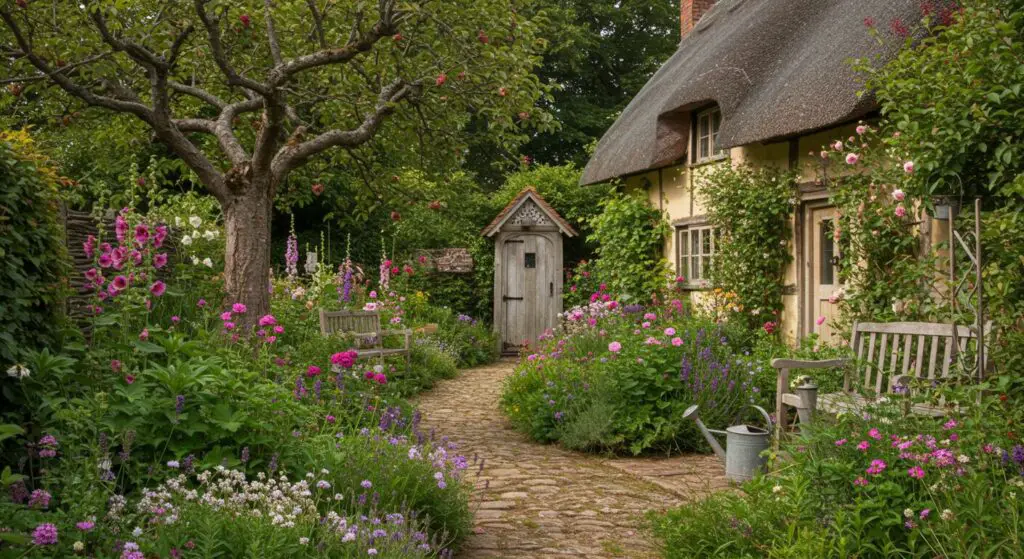
If you’re dreaming of reimagining your outdoor space and changing it into a quintessential English cottage garden, you’re in the right place. Below, we’ll explore 10 inspiring ideas to help you create a garden that feels both enchanting and personal. From plant choices to structural elements, these tips will guide you in crafting a space that is as functional as it is beautiful.
1. Embrace Informal, Overflowing Plantings
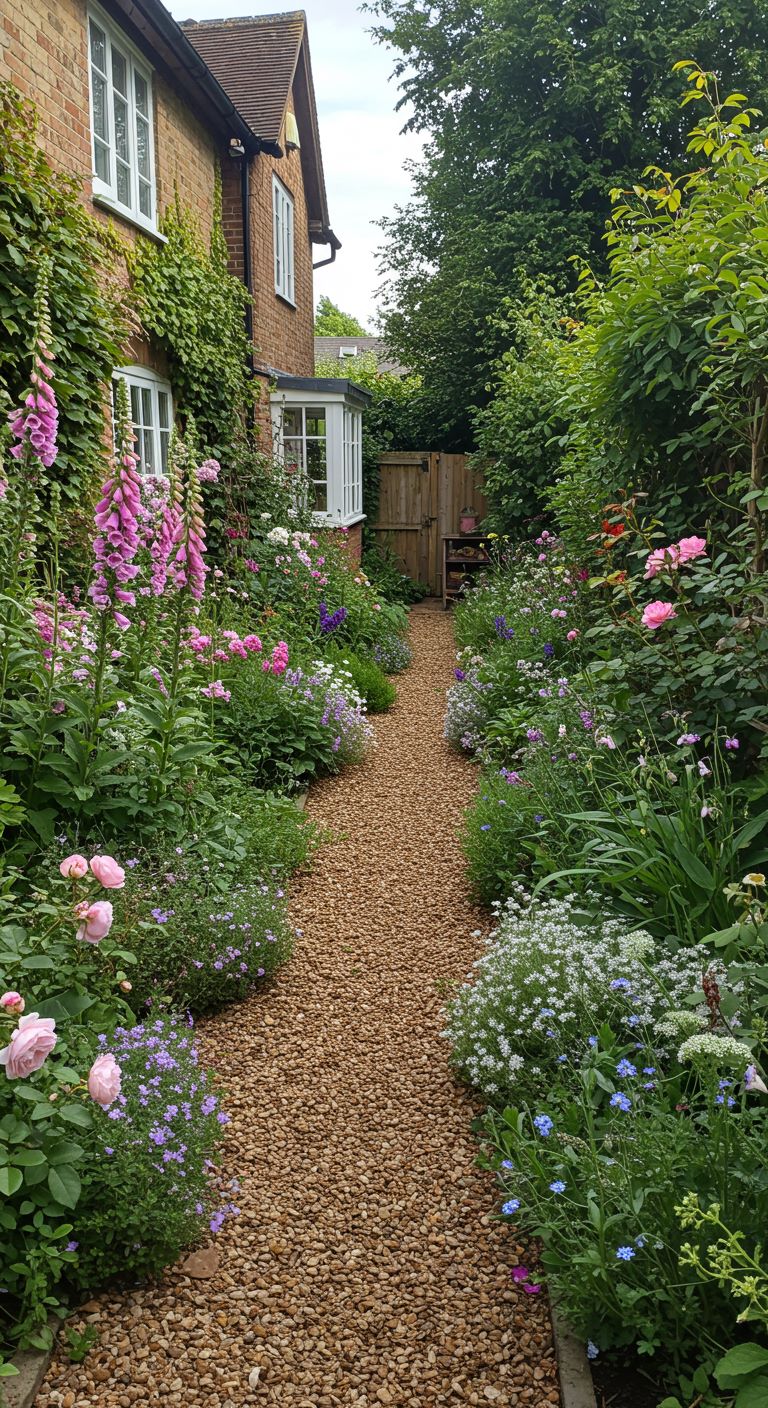
At the heart of the English cottage garden is its informal, almost wild, planting style. Unlike formal gardens with rigid symmetry and manicured lawns, cottage gardens thrive on a sense of abundance and spontaneity. Plants are allowed to spill over pathways, mingle with one another, and grow in a way that feels natural and uncontrived.
How to Achieve This:
- Mix Heights and Textures: Combine tall, spiky plants like foxgloves (Digitalis) and delphiniums with low-growing groundcovers like creeping thyme or lady’s mantle (Alchemilla mollis). Add in mid-height plants such as roses, lavender, and salvias for balance.
- Avoid Straight Lines: Plant in drifts or clusters rather than rows to create a more organic look. Let plants self-seed to enhance the naturalistic feel.
- Choose Cottage Classics: Opt for traditional cottage garden plants like hollyhocks (Alcea), peonies, phlox, and sweet peas. These plants are not only beautiful but also hardy and easy to grow.
By embracing this relaxed approach, your garden will feel alive and ever-changing, with new blooms and textures emerging throughout the seasons.
2. Incorporate Fragrant Flowers and Herbs
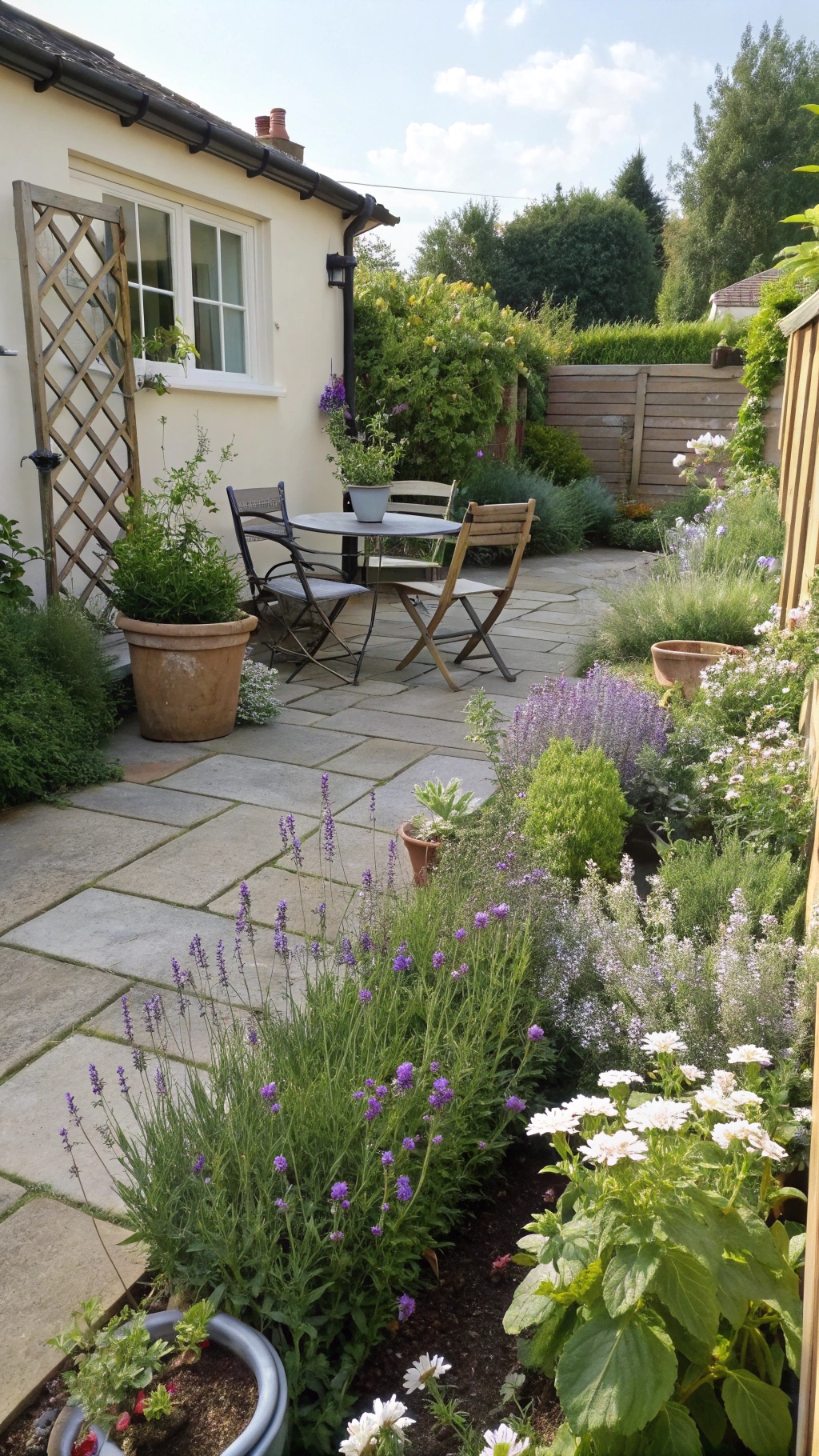
One of the joys of a cottage garden is its sensory appeal. Fragrant flowers and herbs add an extra layer of delight, inviting visitors to pause and enjoy the scents of the garden. Historically, cottage gardens were filled with aromatic plants for both practical and aesthetic reasons, as many herbs were used for cooking, medicine, and household purposes.
How to Achieve This:
- Plant Fragrant Flowers: Include classics like roses, lavender, honeysuckle, and jasmine. Sweet peas and stocks (Matthiola) are also excellent choices for their delicate, sweet scents.
- Add Herbs: Grow rosemary, thyme, sage, and mint near pathways or seating areas where their fragrance can be released when brushed against. Chamomile and lemon balm are also lovely additions.
- Consider Evening Scents: For evening enjoyment, plant night-scented flowers like nicotiana (flowering tobacco) or evening primrose (Oenothera biennis).
Position fragrant plants near entryways, windows, or seating areas to maximize their impact. Not only will they enhance the garden’s charm, but they’ll also attract pollinators like bees and butterflies.
3. Create Cozy, Defined Spaces with Hedges and Fences
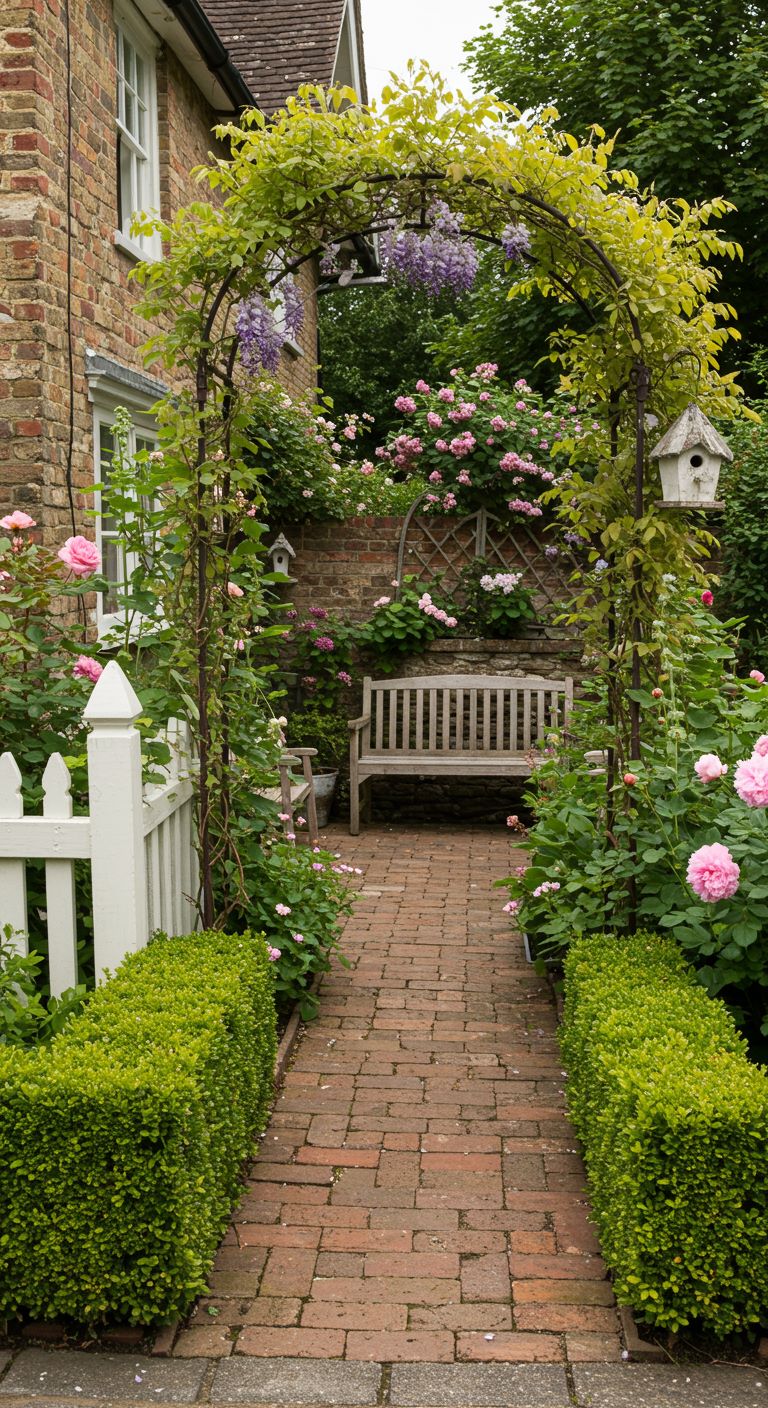
Cottage gardens often feel intimate and enclosed, thanks to the use of hedges, fences, and walls. These structural elements define the garden’s boundaries, create a sense of seclusion, and provide a backdrop for lush plantings. They also add to the garden’s timeless, storybook quality.
How to Achieve This:
- Use Natural Materials: Opt for wooden picket fences, wattle hurdles, or rustic stone walls. These materials blend seamlessly with the garden’s informal aesthetic.
- Plant Hedges: Low boxwood (Buxus) or yew (Taxus) hedges can define pathways or borders, while taller hedges like beech (Fagus sylvatica) or hawthorn (Crataegus) provide privacy.
- Add Climbing Plants: Soften fences and walls with climbers like clematis, climbing roses, or ivy. These plants add vertical interest and enhance the garden’s lush, overgrown feel.
By enclosing your garden, you’ll create a cozy, sheltered space that feels like a private retreat—a hallmark of the cottage garden style.
4. Include Traditional Garden Features
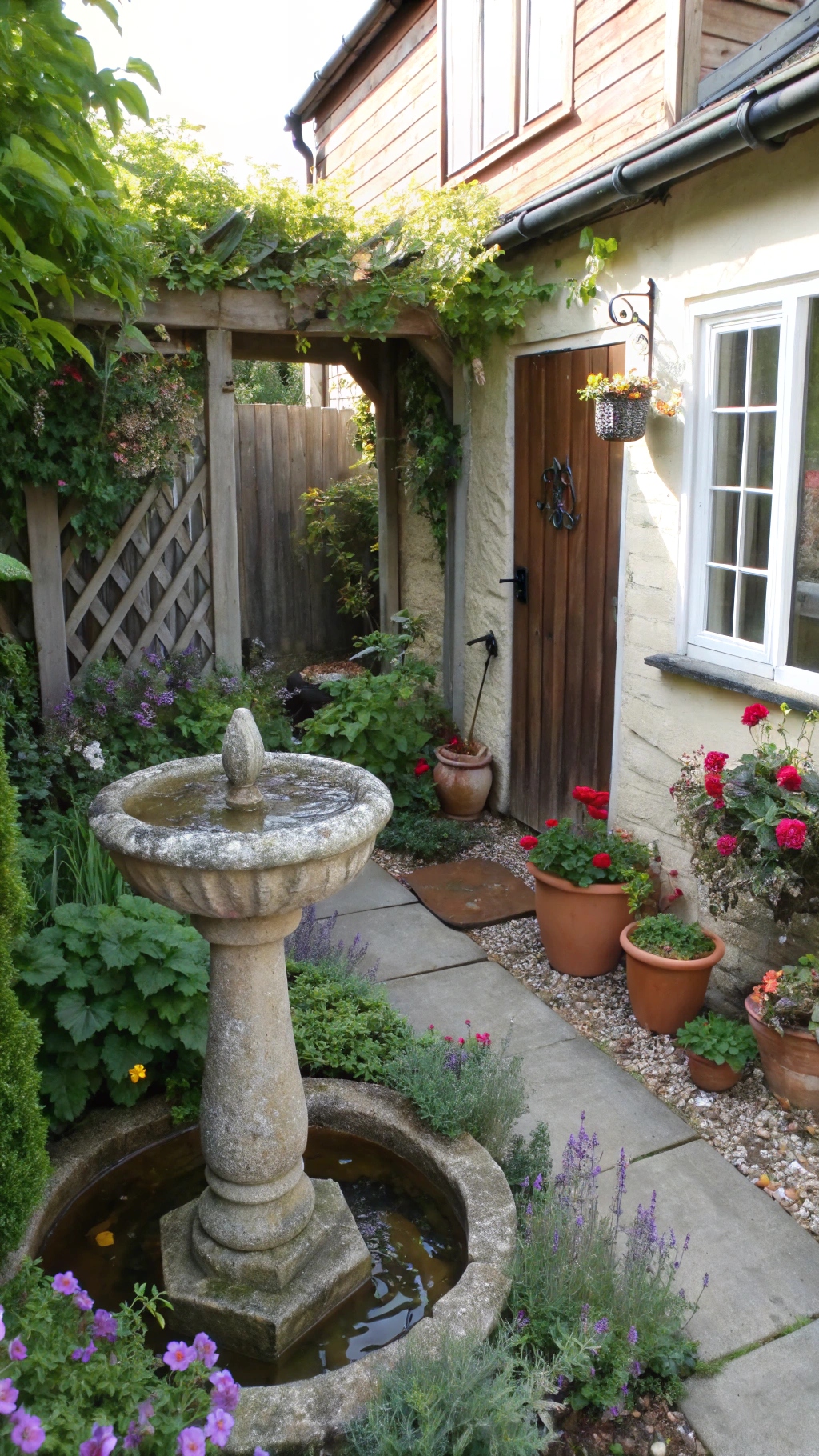
Cottage gardens are full of charming, time-worn features that add character and functionality. These elements often reflect the garden’s historical roots, where practicality and beauty went hand in hand.
How to Achieve This:
- Add a Garden Gate: A wooden or wrought-iron gate, preferably with an arched top, adds a welcoming touch. Let climbing plants like roses or clematis grow over it for extra charm.
- Incorporate Water Features: A small birdbath, stone trough, or simple fountain can add a focal point and attract wildlife. Keep water features rustic and understated to match the garden’s style.
- Use Garden Ornaments: Vintage items like weathered urns, old watering cans, or stone statues can add personality. Avoid modern or overly ornate decorations, as they can feel out of place.
These traditional features will enhance the garden’s authenticity and create a sense of history, even in a newly designed space.
Mix Flowers, Fruits, and Vegetables
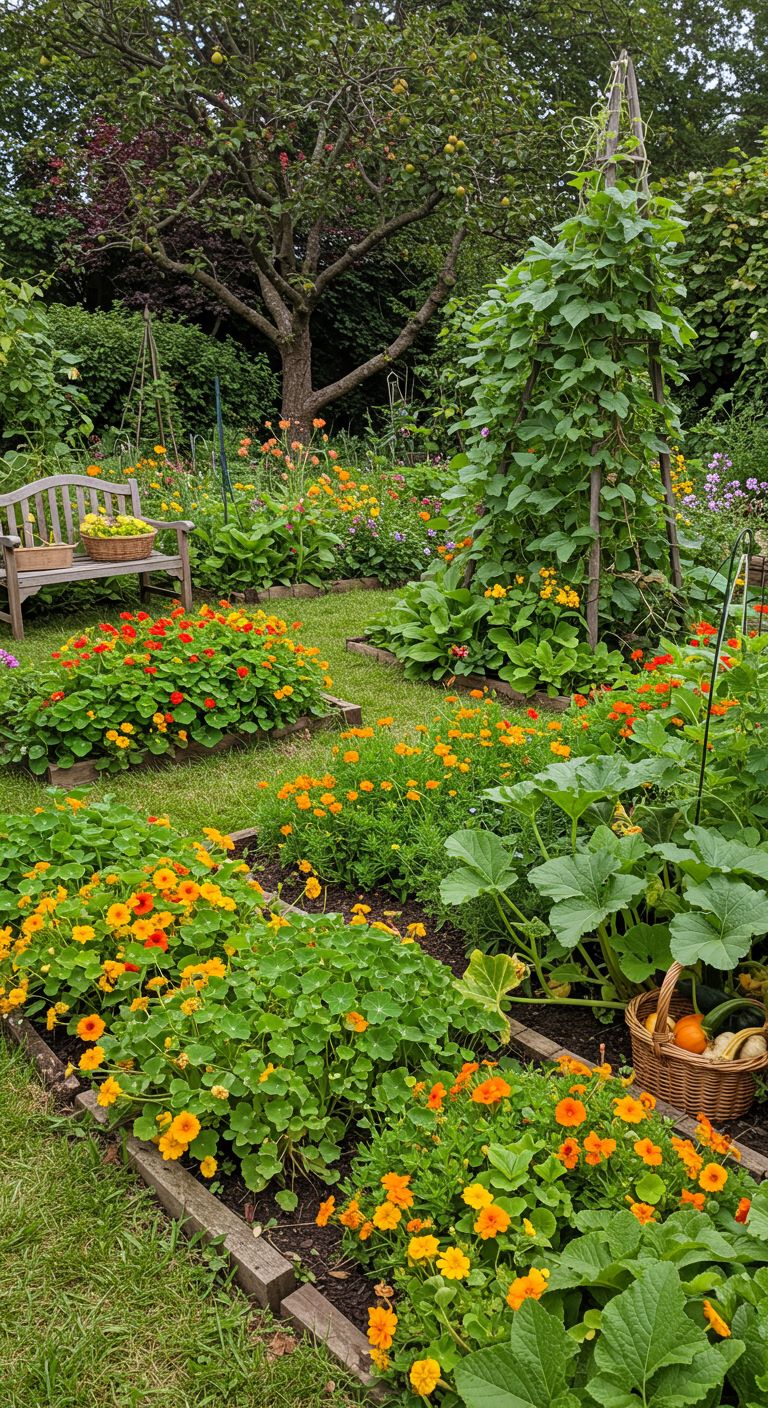
Historically, cottage gardens were not purely ornamental—they were productive spaces where flowers, fruits, and vegetables grew side by side. This mix of edible and decorative plants is a key characteristic of the style and adds to its charm and practicality.
How to Achieve This:
- Grow Edible Flowers: Include edible flowers like nasturtiums, violas, and marigolds, which can be used in salads or as garnishes.
- Plant Fruits and Vegetables: Grow strawberries, rhubarb, and currants alongside flowers. Climbing beans, peas, or even pumpkins can add vertical interest.
- Use Companion Planting: Pair plants that benefit each other, such as marigolds with tomatoes to deter pests, or chives with roses to repel aphids.
By blending edibles with ornamentals, you’ll create a garden that is both beautiful and functional—a true reflection of the cottage garden ethos.
6. Add Vertical Interest with Climbers and Arbors
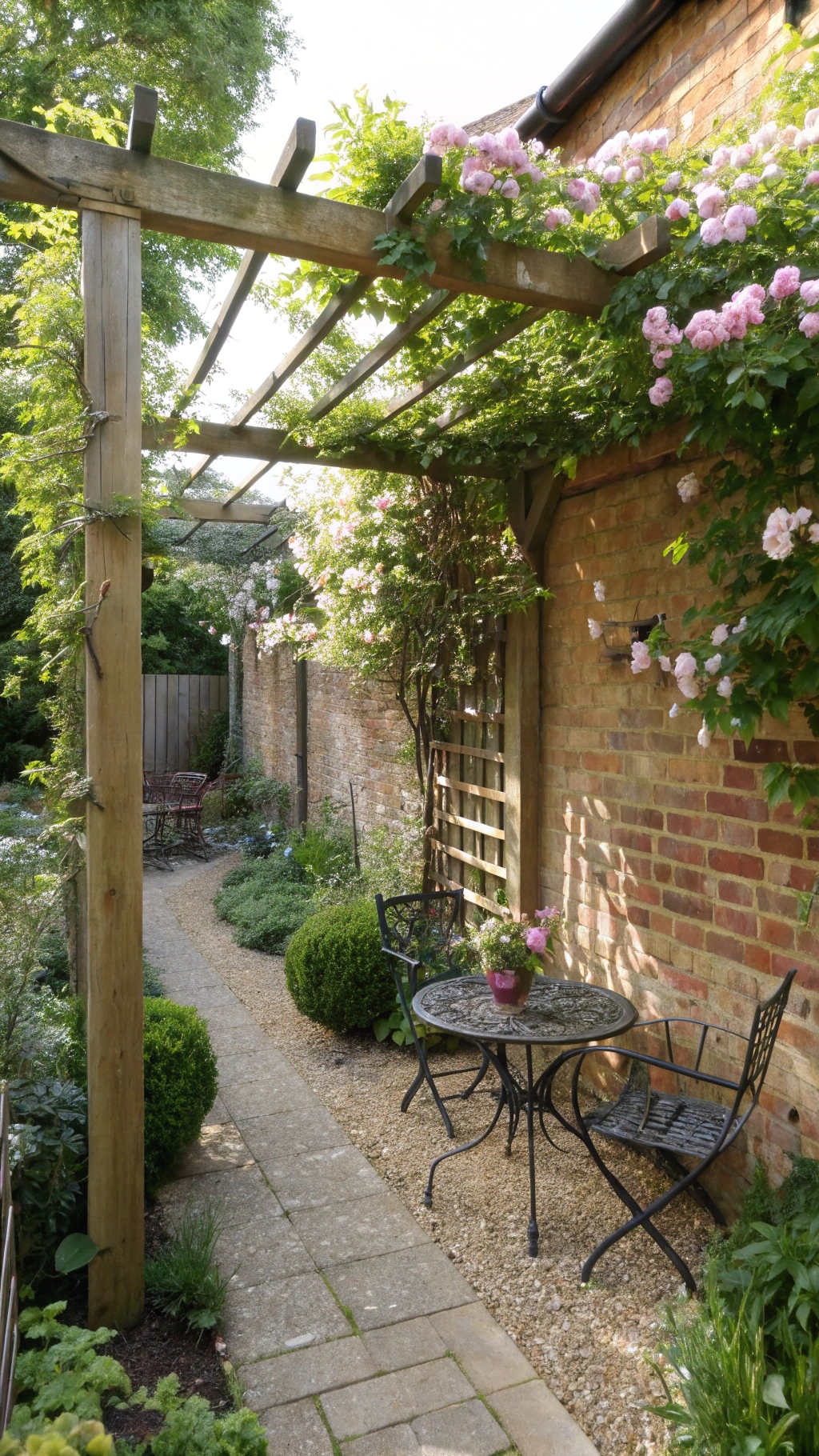
Cottage gardens make excellent use of vertical space, with climbers and arbors adding height and structure. These features not only maximize planting space but also create romantic, fairy-tale-like elements that enhance the garden’s charm.
How to Achieve This:
- Install Arbors or Pergolas: Place an arbor over a garden gate or pathway, and train climbers like roses, clematis, or wisteria to grow over it. Pergolas can also be used to create shaded seating areas.
- Use Obelisks and Trellises: Add wooden or metal obelisks for sweet peas or beans to climb. Trellises can support climbers like honeysuckle or morning glory.
- Plant Fast-Growing Climbers: Choose vigorous plants like clematis, climbing hydrangea, or passionflower to quickly cover structures.
Vertical elements add depth and dimension to the garden, making it feel more dynamic and inviting.
7. Create Winding Pathways
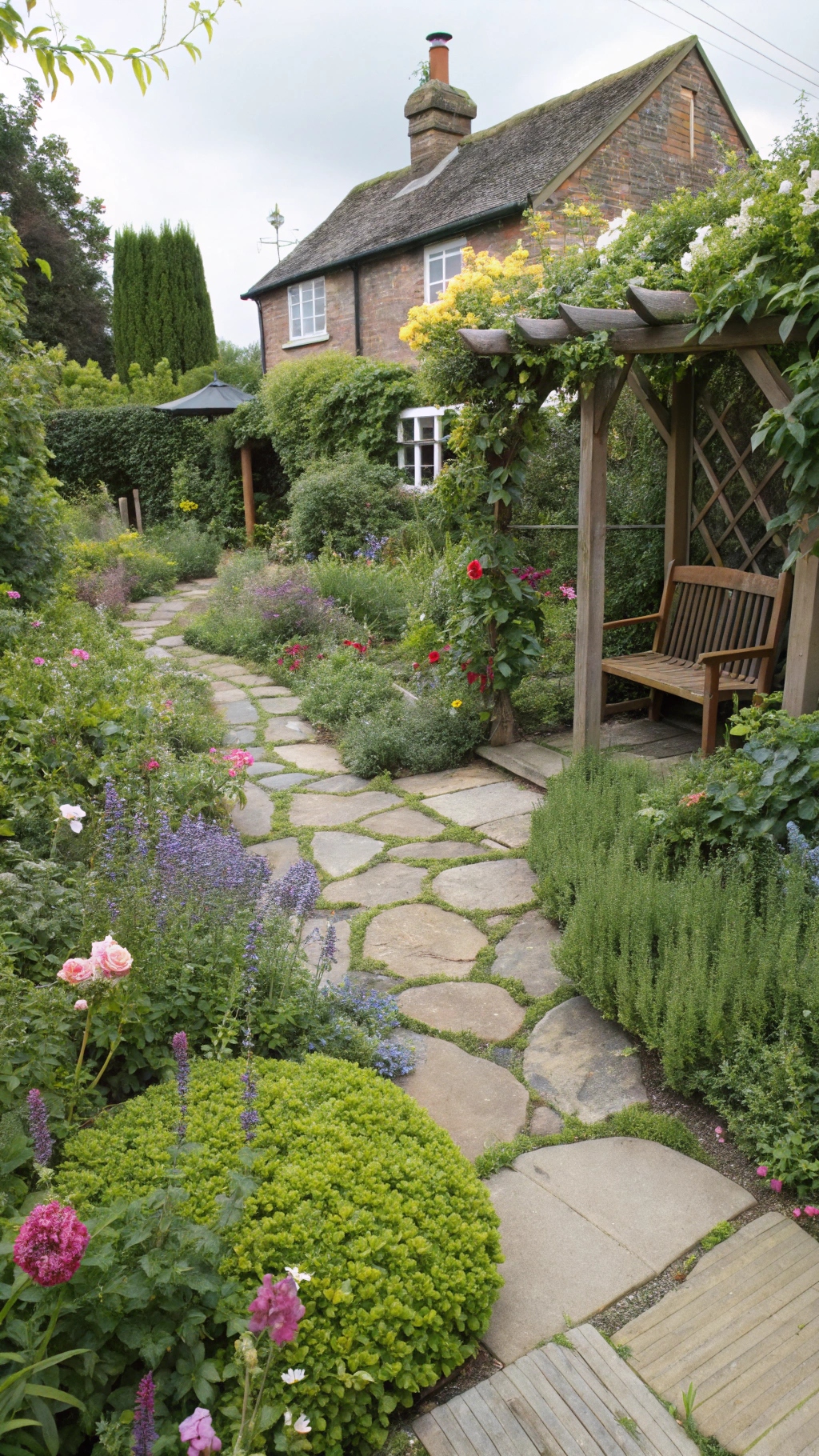
Winding, meandering pathways are a hallmark of the cottage garden, inviting visitors to explore and discover hidden corners. These paths add to the garden’s informal, relaxed feel and encourage a sense of adventure.
How to Achieve This:
- Use Natural Materials: Lay paths with gravel, brick, or flagstone for a rustic look. Avoid modern materials like concrete, which can feel too formal.
- Let Plants Soften the Edges: Allow low-growing plants like thyme, alyssum, or creeping Jenny to spill over the edges of the path. This softens the lines and enhances the garden’s naturalistic feel.
- Keep Paths Narrow: Cottage garden paths are typically narrow and winding, encouraging a slower, more leisurely pace.
Winding pathways create a sense of mystery and intimacy, making the garden feel larger and more engaging.
8. Celebrate Seasonal Color and Succession Planting
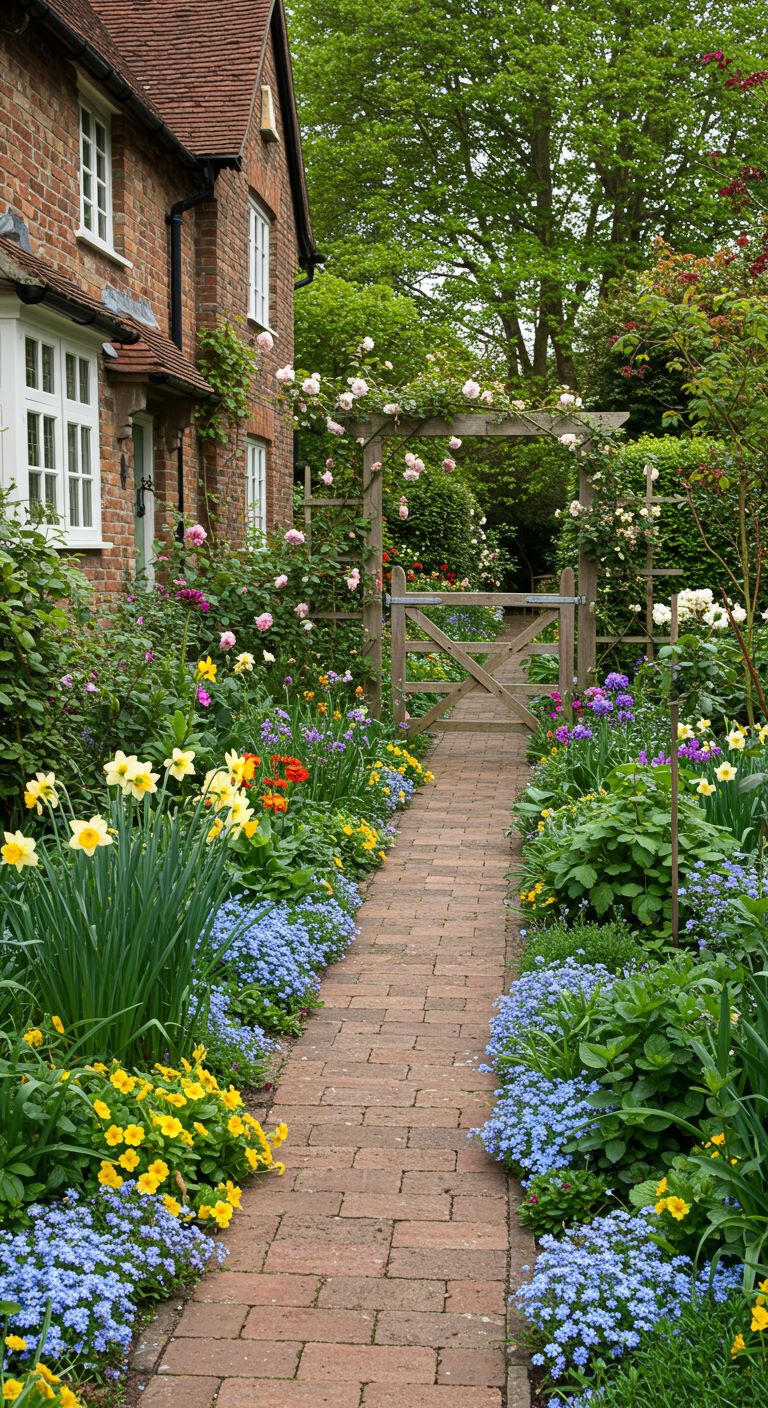
Cottage gardens are designed to provide year-round interest, with blooms and colors changing with the seasons. Succession planting ensures that there is always something in flower, keeping the garden vibrant and alive.
How to Achieve This:
- Plan for Spring: Plant bulbs like daffodils, tulips, and crocuses for early color. Add spring-blooming perennials like primroses and forget-me-nots.
- Focus on Summer: Summer is the peak season for cottage gardens, with roses, delphiniums, and geraniums taking center stage. Annuals like cosmos and zinnias can fill gaps.
- Extend into Fall and Winter: Include late-blooming plants like asters, dahlias, and sedums. Evergreens, ornamental grasses, and berries can add winter interest.
By planning for seasonal color, you’ll ensure that your garden remains beautiful and dynamic throughout the year.
9. Attract Wildlife with Biodiversity
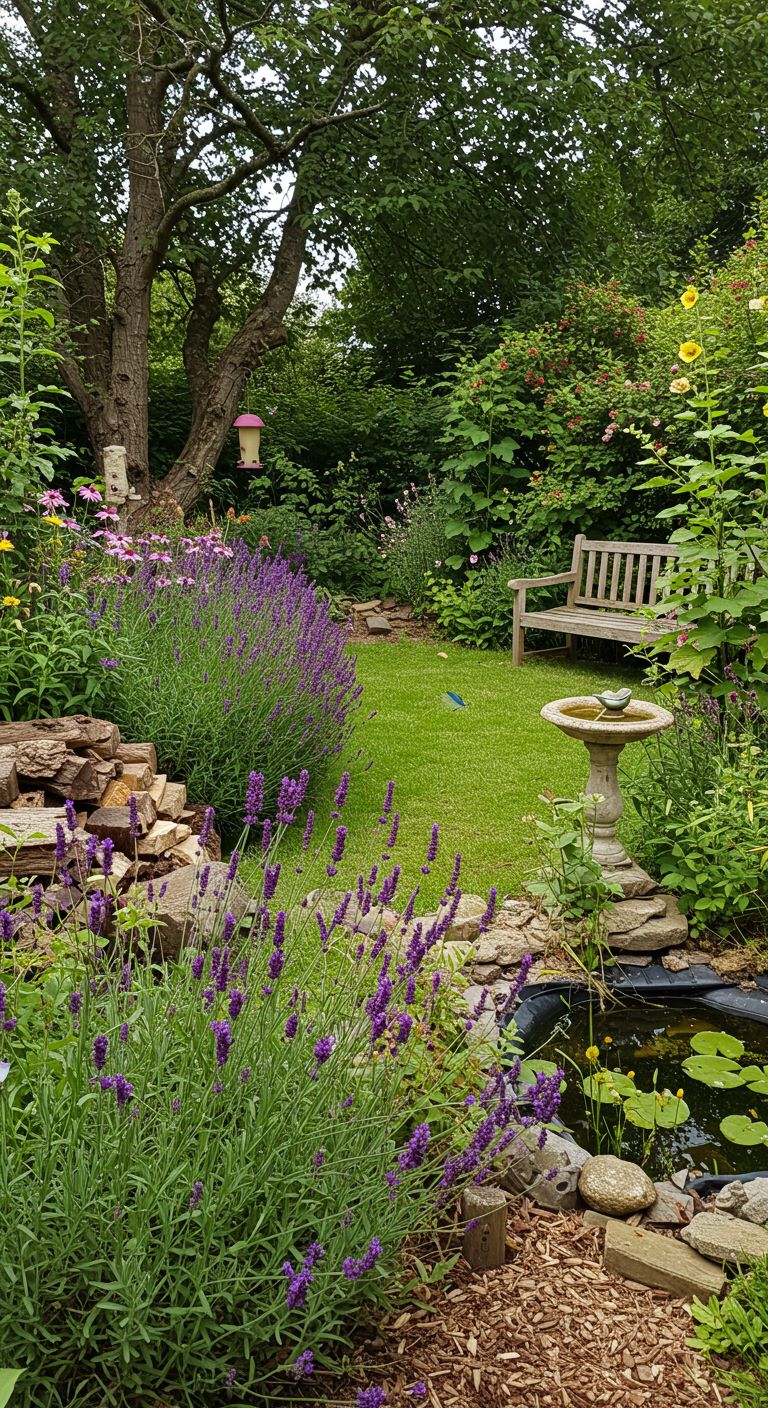
Cottage gardens are havens for wildlife, thanks to their diverse plantings and naturalistic design. Attracting birds, bees, butterflies, and other creatures not only enhances the garden’s charm but also supports local ecosystems.
How to Achieve This:
- Plant Pollinator-Friendly Flowers: Include nectar-rich plants like lavender, salvia, and echinacea to attract bees and butterflies.
- Add Bird Feeders and Baths: Provide food and water for birds with feeders and birdbaths. Plant berry-producing shrubs like holly or cotoneaster for natural food sources.
- Create Habitat: Leave some areas of the garden wild, with log piles or leaf litter for insects and small mammals to thrive. Consider adding a small pond or water feature to attract frogs, newts, and dragonflies, further enhancing the garden’s biodiversity.
By fostering a wildlife-friendly environment, your cottage garden will feel alive with activity and contribute to the health of the local ecosystem. Watching birds flutter among the flowers or bees buzzing around lavender will add to the garden’s charm and sense of connection to nature.
10. Personalize with Sentimental Touches
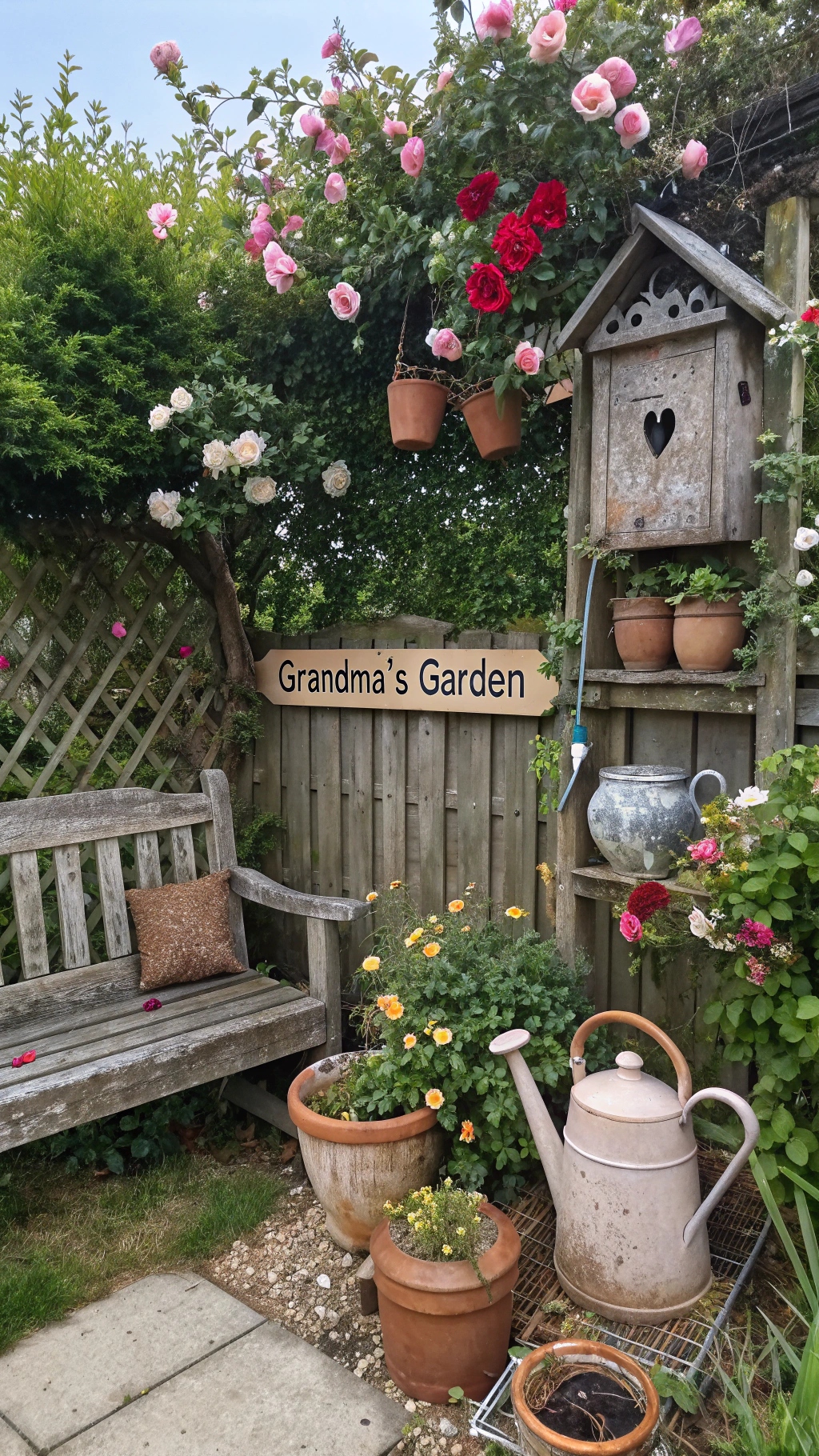
A cottage garden is a deeply personal space, often reflecting the gardener’s personality, memories, and preferences. Adding sentimental touches makes the garden feel unique and meaningful, turning it into a true extension of your home.
How to Achieve This:
- Incorporate Heirlooms and Antiques: Use old family items like a weathered bench, vintage plant pots, or a reclaimed iron gate to add history and nostalgia.
- Grow Favorite Plants: Include plants that hold personal significance, such as flowers from your childhood garden, a rose bush given as a gift, or herbs you love to cook with.
- Create a Memory Corner: Dedicate a small area of the garden to commemorate loved ones or special moments. Plant a tree, install a plaque, or add a bench for quiet reflection.
- Handmade Elements: Add DIY touches like painted signs, homemade birdhouses, or handcrafted stepping stones to infuse the garden with your creativity.
These personal touches will make your cottage garden feel like a cherished, lived-in space that tells your story. It will become a place not just for plants, but for memories, relaxation, and joy.
Bringing It All Together: Designing Your Cottage Garden
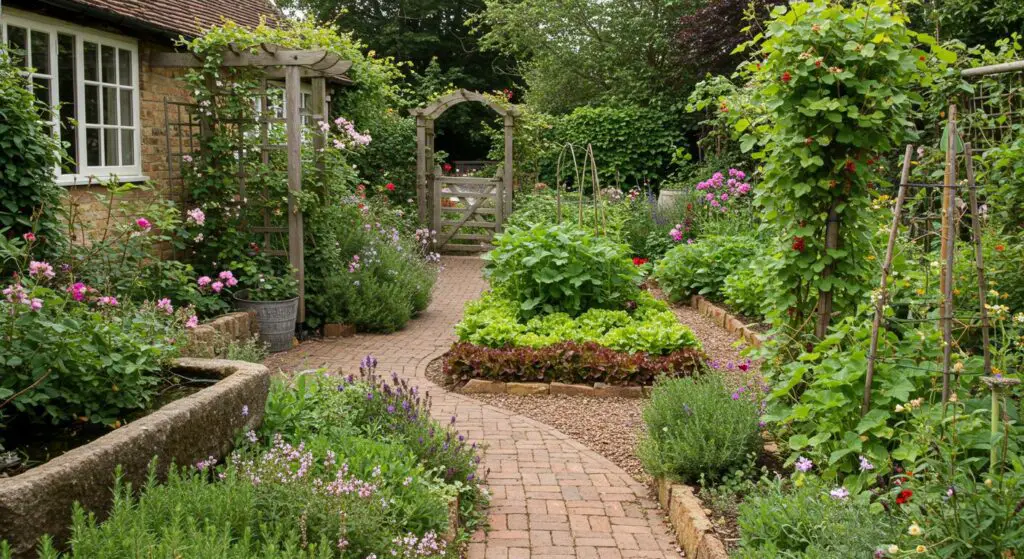
Now that we’ve explored 10 ideas for creating an English cottage garden, it’s time to bring these elements together into a cohesive design. Start by sketching a rough plan of your garden, noting existing features like trees, fences, or pathways. Consider the following tips as you plan:
- Start Small: If you’re new to gardening, begin with a small area and expand over time. Cottage gardens evolve naturally, so don’t feel pressured to perfect everything at once.
- Work with Your Climate: Choose plants that thrive in your local climate and soil conditions. While traditional cottage garden plants are ideal, you can adapt the style to include native or drought-tolerant species if needed.
- Balance Color and Texture: Aim for a harmonious mix of colors, textures, and heights. Avoid overcrowding, but embrace the lush, abundant feel that defines the style.
- Think Vertically and Horizontally: Use climbers, arbors, and trellises to add vertical interest, while groundcovers and pathways create horizontal flow.
- Maintain with Care: Cottage gardens require regular maintenance, such as deadheading flowers, pruning climbers, and weeding. However, the informal style allows for a bit of imperfection, so don’t stress about keeping everything pristine.
As you design and plant your garden, remember that the beauty of a cottage garden lies in its individuality and evolution. It’s a space that grows and changes with you, reflecting your tastes, experiences, and connection to nature.
The Timeless Appeal of the English Cottage Garden
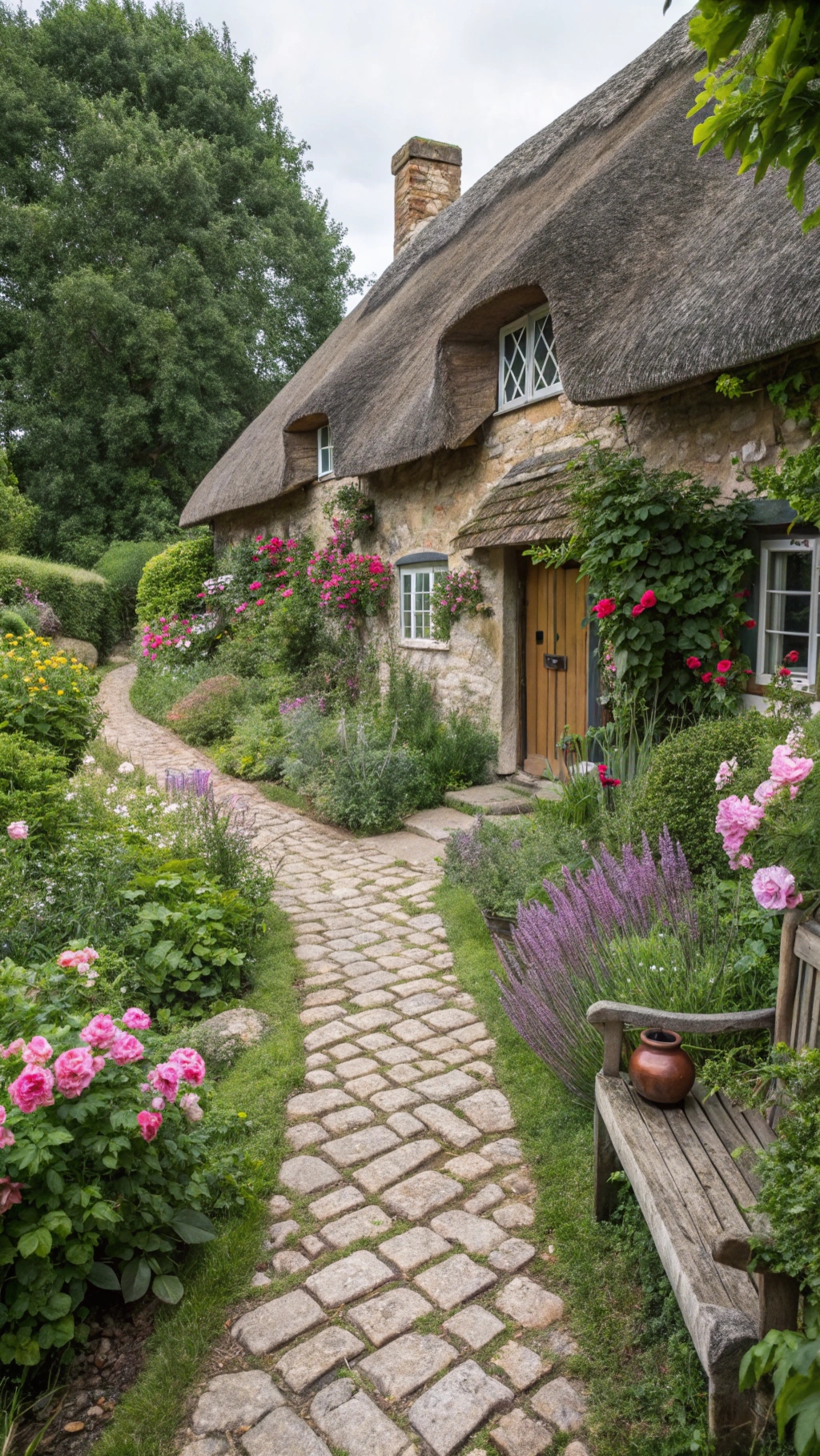
The English cottage garden is beyond just a gardening style—it’s a way of life. It celebrates simplicity, abundance, and the joy of working with nature. Whether you have a small urban plot or a sprawling rural yard, you can adapt these ideas to create a garden that feels timeless, charming, and uniquely yours.
From overflowing flower beds to fragrant herbs, winding pathways to wildlife-friendly corners, the cottage garden invites you to slow down, connect with the seasons, and find beauty in imperfection. It’s a space where practicality meets romance, where flowers bloom alongside vegetables, and where every corner tells a story.
So, grab your trowel, gather your favorite plants, and start creating your own English cottage garden. With a little creativity and care, you’ll craft an outdoor space that feels like a haven—a place to escape, dream, and delight in the wonders of nature.
Final Thoughts
The English cottage garden is a timeless style that continues to inspire gardeners around the world. Its charm lies in its ability to feel both nostalgic and fresh, formal yet relaxed, structured yet wild. By incorporating these 10 ideas—embracing informal plantings, adding fragrance, defining spaces, and personalizing with sentimental touches—you can create a garden that captures the essence of this beloved style.
As you tend to your garden, remember that it’s a living, evolving space. Plants will grow, bloom, and fade; wildlife will come and go; and your own tastes and preferences will shape its development. Embrace the journey, and let your cottage garden become a reflection of your love for nature, beauty, and creativity.
Whether you’re sipping tea by a rose-covered arbor, harvesting fresh herbs for dinner, or watching bees dance among the flowers, your cottage garden will be a source of joy and inspiration for years to come. So, start planting, dreaming, and creating—your English cottage garden awaits!
